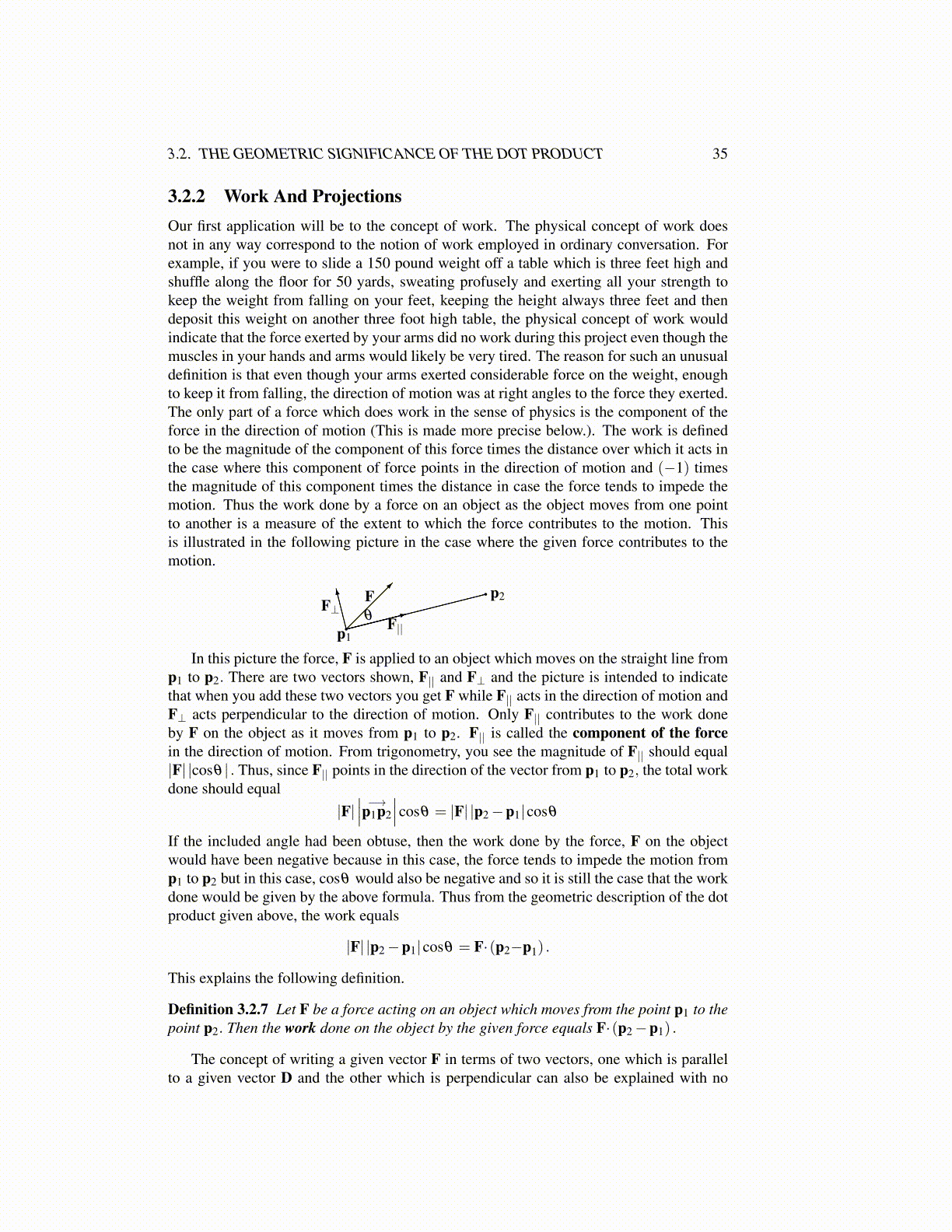
3.2. THE GEOMETRIC SIGNIFICANCE OF THE DOT PRODUCT 35
3.2.2 Work And ProjectionsOur first application will be to the concept of work. The physical concept of work doesnot in any way correspond to the notion of work employed in ordinary conversation. Forexample, if you were to slide a 150 pound weight off a table which is three feet high andshuffle along the floor for 50 yards, sweating profusely and exerting all your strength tokeep the weight from falling on your feet, keeping the height always three feet and thendeposit this weight on another three foot high table, the physical concept of work wouldindicate that the force exerted by your arms did no work during this project even though themuscles in your hands and arms would likely be very tired. The reason for such an unusualdefinition is that even though your arms exerted considerable force on the weight, enoughto keep it from falling, the direction of motion was at right angles to the force they exerted.The only part of a force which does work in the sense of physics is the component of theforce in the direction of motion (This is made more precise below.). The work is definedto be the magnitude of the component of this force times the distance over which it acts inthe case where this component of force points in the direction of motion and (−1) timesthe magnitude of this component times the distance in case the force tends to impede themotion. Thus the work done by a force on an object as the object moves from one pointto another is a measure of the extent to which the force contributes to the motion. Thisis illustrated in the following picture in the case where the given force contributes to themotion.
F
F||F⊥
p2
p1
θ
In this picture the force, F is applied to an object which moves on the straight line fromp1 to p2. There are two vectors shown, F|| and F⊥ and the picture is intended to indicatethat when you add these two vectors you get F while F|| acts in the direction of motion andF⊥ acts perpendicular to the direction of motion. Only F|| contributes to the work doneby F on the object as it moves from p1 to p2. F|| is called the component of the forcein the direction of motion. From trigonometry, you see the magnitude of F|| should equal|F| |cosθ | . Thus, since F|| points in the direction of the vector from p1 to p2, the total workdone should equal
|F|∣∣∣ −→p1p2
∣∣∣cosθ = |F| |p2−p1|cosθ
If the included angle had been obtuse, then the work done by the force, F on the objectwould have been negative because in this case, the force tends to impede the motion fromp1 to p2 but in this case, cosθ would also be negative and so it is still the case that the workdone would be given by the above formula. Thus from the geometric description of the dotproduct given above, the work equals
|F| |p2−p1|cosθ = F·(p2−p1) .
This explains the following definition.
Definition 3.2.7 Let F be a force acting on an object which moves from the point p1 to thepoint p2. Then the work done on the object by the given force equals F·(p2−p1) .
The concept of writing a given vector F in terms of two vectors, one which is parallelto a given vector D and the other which is perpendicular can also be explained with no